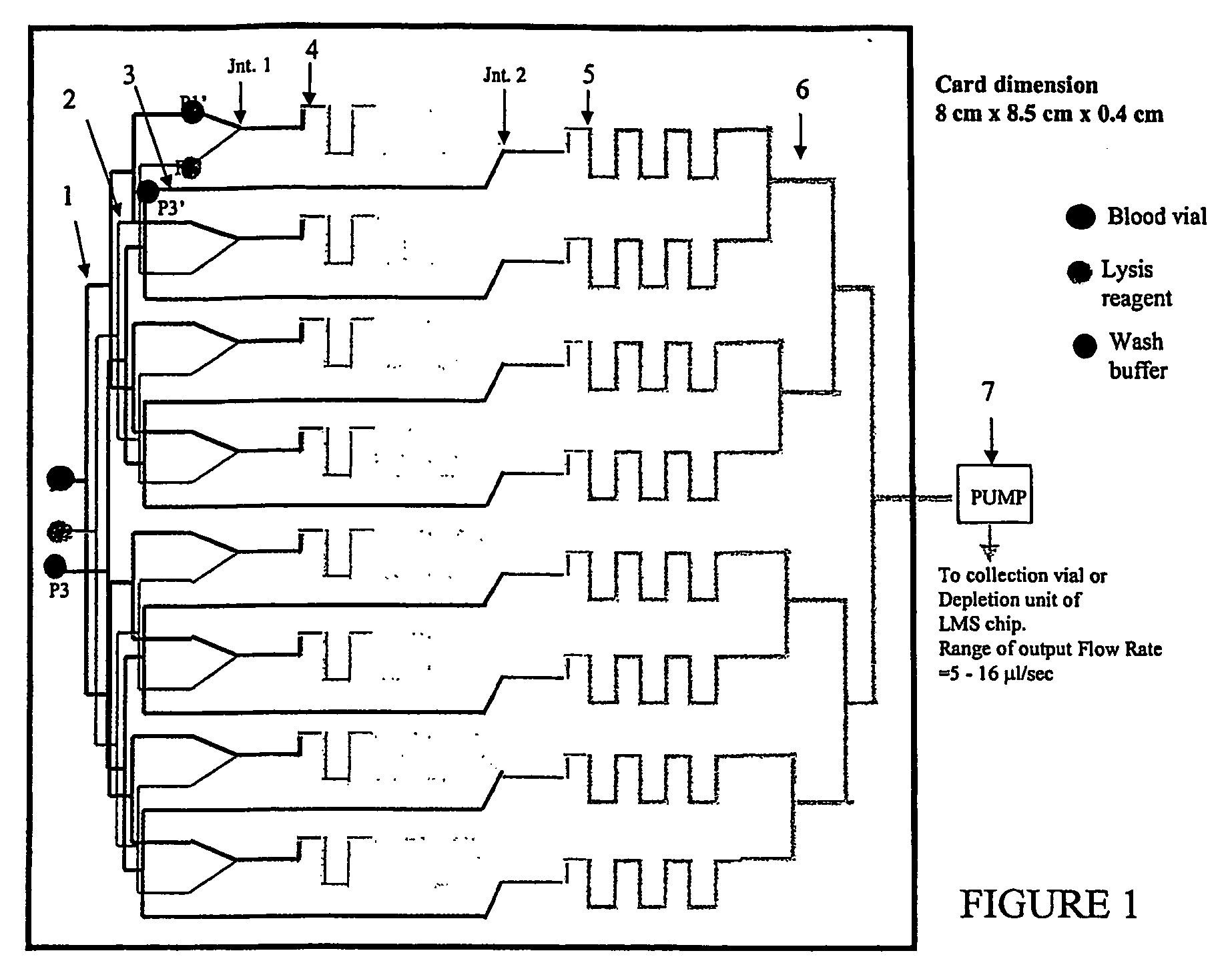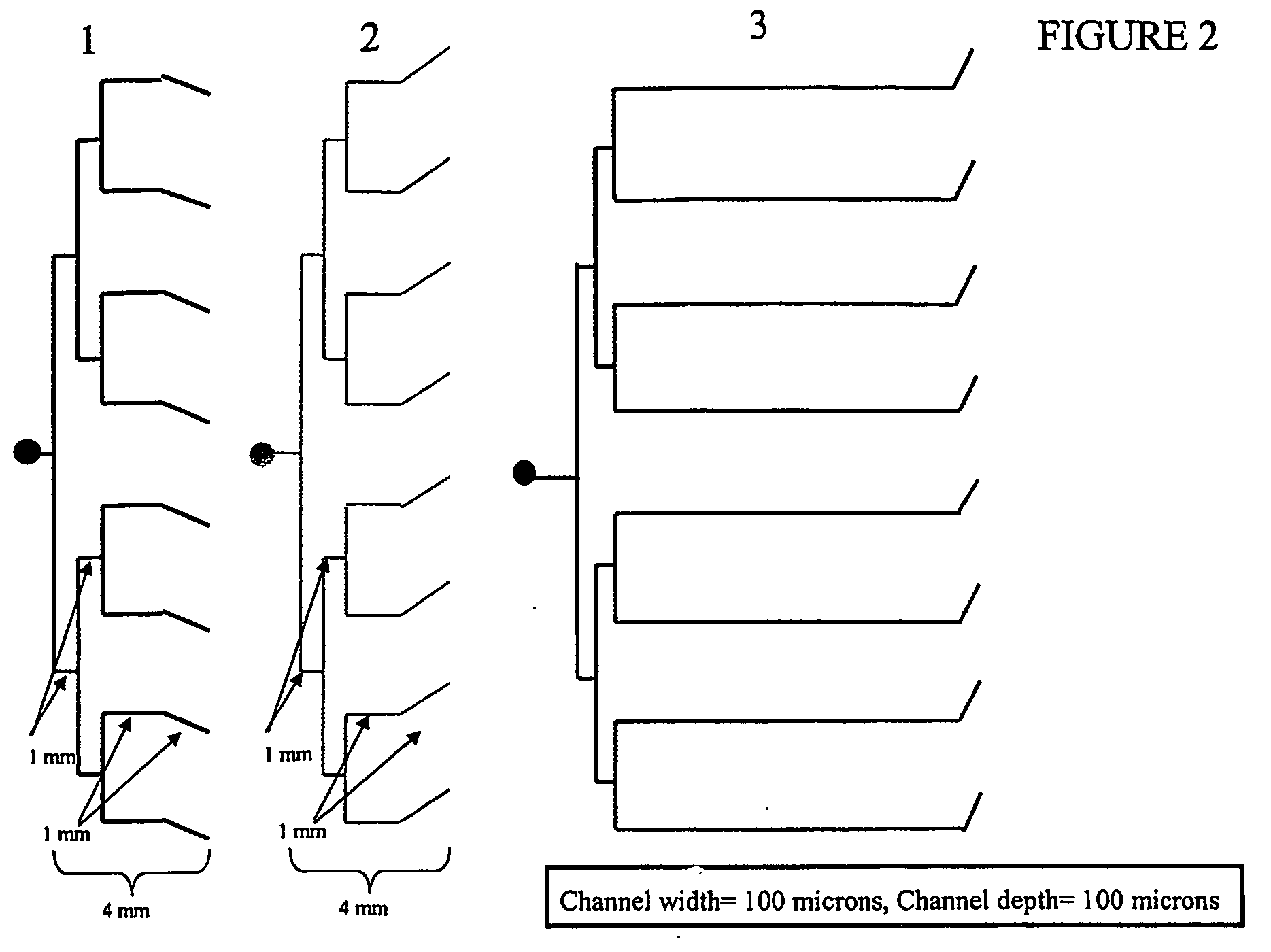Microfluidic device for cell separation and uses thereof
a microfluidic device and cell technology, applied in the field of medical diagnostics and microfluidics, to achieve the effect of simple and selective approach
- Summary
- Abstract
- Description
- Claims
- Application Information
AI Technical Summary
Benefits of technology
Problems solved by technology
Method used
Image
Examples
Embodiment Construction
[0059] The invention features methods for separating a desired cell from a mixture or enriching the population of a desired cell in a mixture. The methods are generally based on sequential processing steps, each of which reduces the number of undesired cells in the mixture, but one processing step may be used in the methods of the invention. Devices for carrying out various processing steps may be separate or integrated into one microfluidic system. The devices of the invention are a device for cell lysis, a device for cell binding, a device for arraying cells, and a device for size, shape, or deformability based separation. In one embodiment, processing steps are used to reduce the number of cells prior to arraying. Desirably, the methods of the invention retain at least 75%, 80%, 90%, 95%, 98%, or 99% of the desired cells compared to the initial mixture, while potentially enriching the population of desired cells by a factor of at least 100, 1000, 10,000, 100,000, or even 1,000,00...
PUM
| Property | Measurement | Unit |
|---|---|---|
| volumes | aaaaa | aaaaa |
| volumes | aaaaa | aaaaa |
| height | aaaaa | aaaaa |
Abstract
Description
Claims
Application Information
 Login to View More
Login to View More - R&D
- Intellectual Property
- Life Sciences
- Materials
- Tech Scout
- Unparalleled Data Quality
- Higher Quality Content
- 60% Fewer Hallucinations
Browse by: Latest US Patents, China's latest patents, Technical Efficacy Thesaurus, Application Domain, Technology Topic, Popular Technical Reports.
© 2025 PatSnap. All rights reserved.Legal|Privacy policy|Modern Slavery Act Transparency Statement|Sitemap|About US| Contact US: help@patsnap.com



